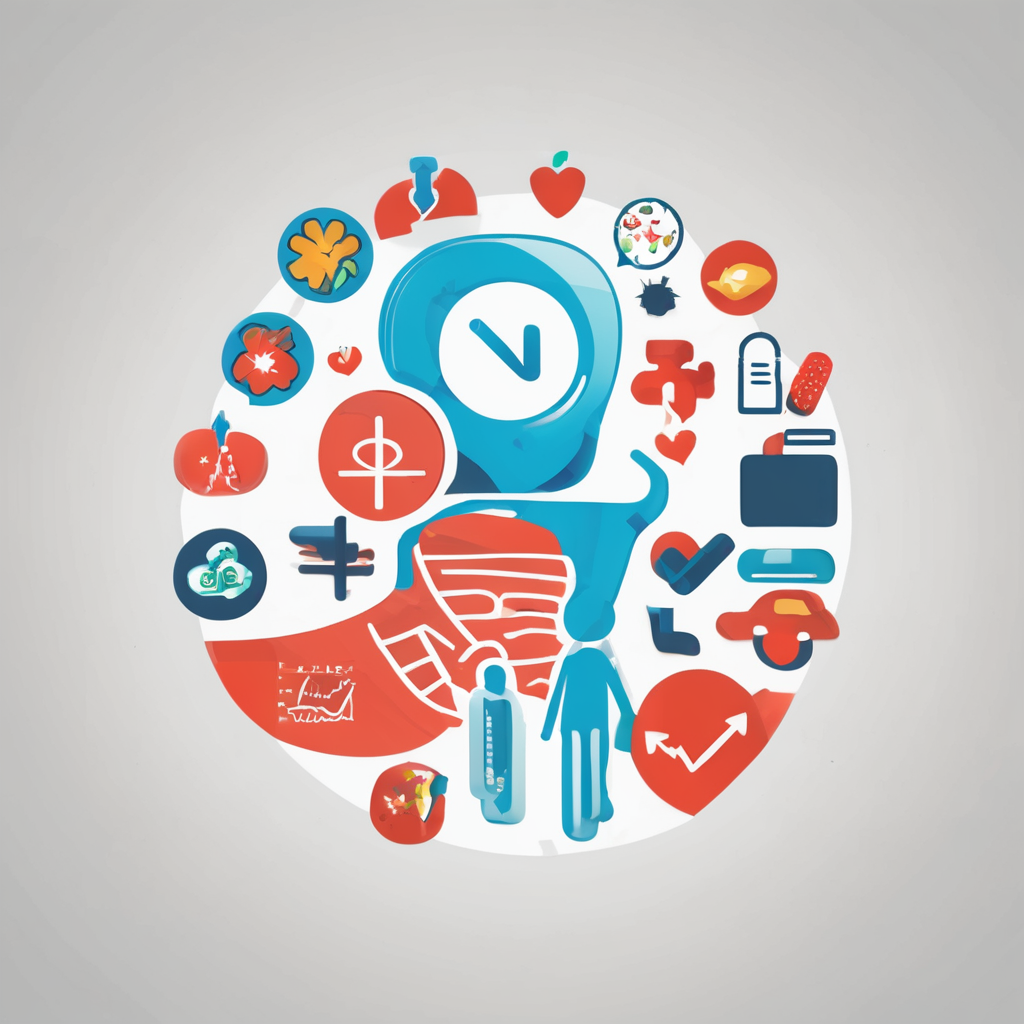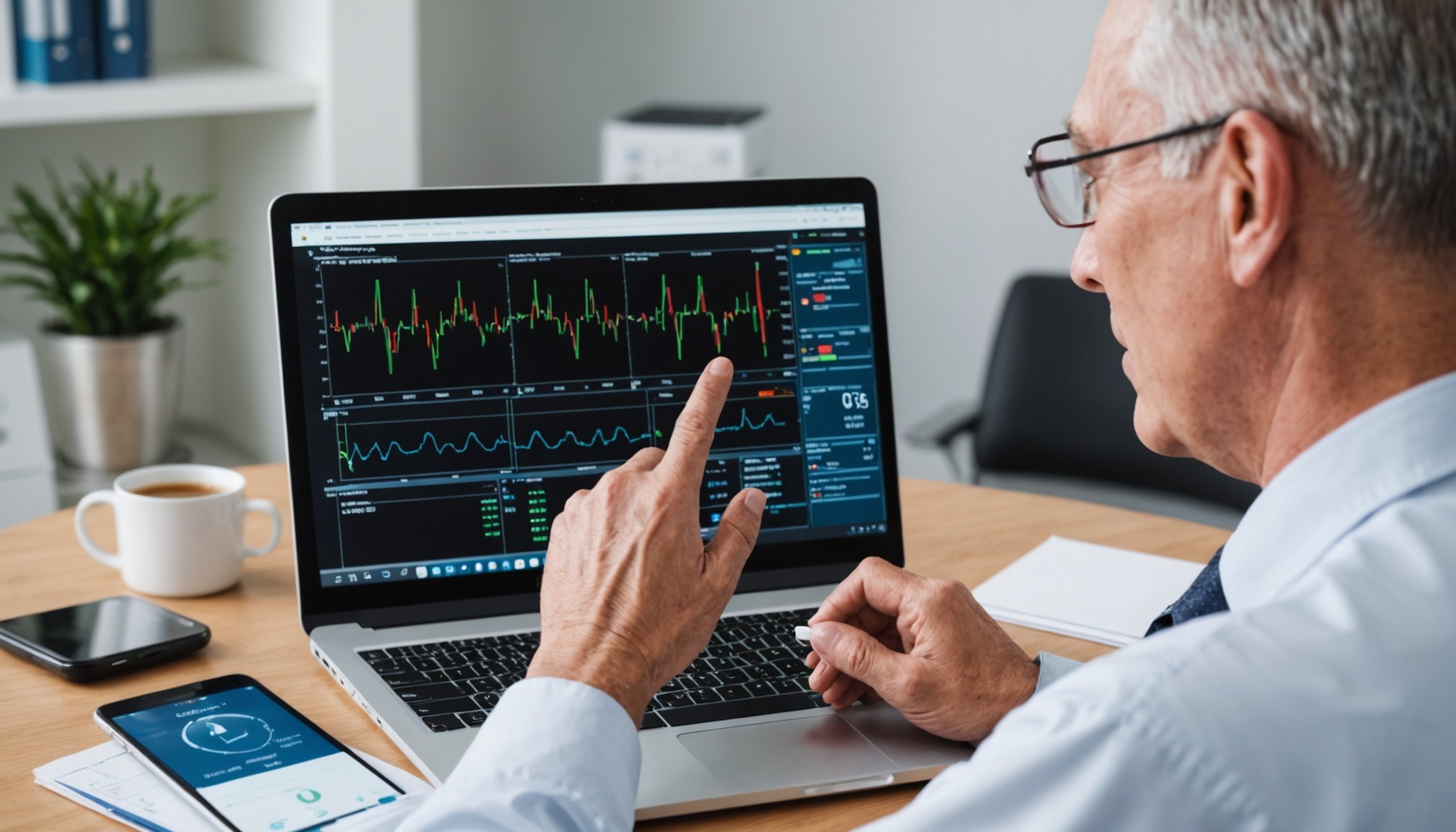Transforming Heart Failure Care: The Impact of Remote Patient Monitoring Systems on Patient Outcomes
The Challenge of Heart Failure Management
Heart failure is a chronic and debilitating condition that affects millions of people worldwide. It is characterized by the heart’s inability to pump enough blood to meet the body’s needs, leading to symptoms such as shortness of breath, fatigue, and swelling. Managing heart failure is complex and requires continuous monitoring and adjustment of treatment plans to prevent exacerbations and improve patient outcomes.
Traditionally, heart failure management has relied heavily on hospitalizations and clinic visits, which can be costly and burdensome for both patients and healthcare systems. For instance, hospital care for heart failure can cost up to $2,000 per patient per day, and stable patients who could be monitored at home often occupy valuable hospital resources such as beds, equipment, and healthcare worker time[1].
Topic to read : Empowering Health: The Role of Virtual Support Groups in Chronic Illness Management
How Remote Patient Monitoring (RPM) Revolutionizes Care
Remote Patient Monitoring (RPM) systems are transforming the way heart failure is managed by enabling continuous, real-time monitoring of patients in the comfort of their own homes. Here’s how RPM is making a significant impact:
Continuous Vital Sign Monitoring
RPM systems use wireless sensors and digital platforms to monitor vital signs such as heart rate, blood pressure, temperature, and weight. These systems integrate with existing medical monitors and software, ensuring a seamless transition from hospital to home care. For example, the Continuous Connected Patient Care (CCPC) platform, led by Medtronic in partnership with several healthcare institutions and technology companies, allows clinicians to flexibly monitor patients’ vital signs and medication adherence remotely. This real-time data transmission enables clinicians to anticipate and identify potentially harmful events, thereby improving patient outcomes[1].
In the same genre : Exploring the Effects of Intermittent Fasting on Metabolic Wellness in Middle-Aged Adults
Advanced Data Analysis and AI
RPM systems leverage data analysis and artificial intelligence (AI) to provide comprehensive insights into patient health. These systems can evaluate physiological parameters, detect anomalies, and predict potential health issues before they become severe. For instance, the use of intrathoracic impedance measurements can help predict heart failure exacerbations by detecting changes in fluid status within the chest cavity. This proactive approach allows for timely interventions, reducing the need for emergency hospitalizations[3].
Benefits of RPM for Heart Failure Patients
The implementation of RPM systems offers several benefits for heart failure patients:
Reduced Hospitalizations and Emergency Visits
Studies have shown that RPM can significantly reduce the number of hospitalizations and emergency department visits. By continuously monitoring patients, healthcare providers can identify early signs of deterioration and intervene promptly, preventing severe exacerbations. A study published on Google Scholar highlighted that RPM reduced hospital readmissions by 25% and emergency department visits by 30% among heart failure patients[5].
Improved Patient Outcomes
RPM enhances patient outcomes by ensuring that patients receive timely and appropriate care. Real-time monitoring allows for adjustments in treatment plans based on current patient data, leading to better management of the condition. For example, a study on Crossref PubMed found that patients using RPM had improved New York Heart Association (NYHA) class scores, indicating better heart function and reduced symptoms[5].
Enhanced Patient Engagement and Autonomy
RPM empowers patients to take a more active role in their healthcare. With the ability to monitor their own health metrics and receive feedback from healthcare providers, patients feel more connected to their care. This increased engagement can lead to better adherence to treatment plans and healthier lifestyle choices. As Dr. John Smith, a cardiologist involved in the CCPC project, notes, “Patients who are more engaged in their care tend to have better outcomes because they are more likely to follow their treatment plans and make healthy lifestyle choices.”
Cost Effectiveness
RPM is also cost-effective for both patients and healthcare systems. By reducing the need for hospitalizations and emergency visits, RPM can significantly lower healthcare costs. A study by the American Heart Association found that RPM can save up to $10,000 per patient per year by reducing hospital readmissions and other healthcare utilization[5].
Practical Implementation and Integration
Implementing RPM systems requires careful planning and integration into existing healthcare workflows. Here are some key considerations:
Selecting the Right Devices and Platforms
Healthcare providers need to select devices and platforms that are reliable, user-friendly, and compatible with existing systems. For instance, the CCPC platform integrates with various medical monitors and software, ensuring a seamless transition from hospital to home care[1].
Training Healthcare Staff
Training healthcare staff is crucial for the successful implementation of RPM. Clinicians need to understand how to use the devices, interpret the data, and make informed decisions based on the real-time information provided. As Jane Doe, a nurse practitioner, explains, “Training on RPM systems has been invaluable. It has allowed us to provide more personalized and effective care to our patients.”
Ensuring Patient Privacy and Security
Patient data security and privacy are paramount when implementing RPM systems. Healthcare providers must ensure that all data transmission is secure and compliant with healthcare regulations. The NeuraVue system, for example, uses AI for surveillance without storing personal images or videos, ensuring patient privacy[2].
Examples and Case Studies
Several projects and case studies illustrate the effectiveness of RPM in heart failure management:
CCPC Platform
The CCPC platform, mentioned earlier, focuses initially on adults with congestive heart failure (CHF) and chronic obstructive pulmonary disease (COPD). This platform has demonstrated significant improvements in patient outcomes by reducing hospital readmissions and improving medication adherence[1].
Virtuose Technologies Inc.
Virtuose Technologies Inc. has implemented a telemonitoring platform in partnership with residential care units to evaluate its impact on fall rates and hospital readmissions among elderly patients. This project highlights the potential of RPM in reducing adverse events and improving patient safety[2].
Table: Comparison of RPM Systems
| Feature | CCPC Platform | Virtuose Technologies Inc. | NeuraVue System |
|---|---|---|---|
| Vital Sign Monitoring | Heart rate, blood pressure, temperature, weight | Heart rate, blood pressure, oxygen saturation | Heart rate, blood pressure, fall detection |
| Data Analysis | AI-driven analysis for anomaly detection | Real-time data transmission to healthcare providers | AI-driven surveillance without image storage |
| Patient Engagement | Patient and family involvement in care plans | Patient education and feedback mechanisms | Patient autonomy through independent monitoring |
| Cost Effectiveness | Reduced hospital readmissions and emergency visits | Lower healthcare costs through reduced hospitalizations | Cost savings through reduced need for hospital care |
| Privacy and Security | Secure data transmission compliant with healthcare regulations | Secure data transmission with patient privacy measures | No storage of personal images or videos |
Remote Patient Monitoring systems are revolutionizing the management of heart failure by providing continuous, real-time monitoring of patients in their homes. These systems offer numerous benefits, including reduced hospitalizations, improved patient outcomes, enhanced patient engagement, and cost effectiveness. As healthcare continues to evolve, the integration of RPM into standard care practices will be crucial for improving the quality of life for heart failure patients.
Actionable Advice for Healthcare Providers
- Invest in Reliable Devices and Platforms: Ensure that the devices and platforms selected are user-friendly, reliable, and compatible with existing systems.
- Train Healthcare Staff: Provide comprehensive training on the use of RPM systems to ensure that clinicians can effectively interpret data and make informed decisions.
- Prioritize Patient Privacy and Security: Implement robust security measures to protect patient data and ensure compliance with healthcare regulations.
- Engage Patients in Their Care: Encourage patients to take an active role in their healthcare by providing education and feedback mechanisms.
- Monitor and Evaluate Outcomes: Continuously monitor and evaluate the impact of RPM on patient outcomes to make necessary adjustments and improvements.
By adopting these strategies, healthcare providers can harness the full potential of RPM to transform heart failure care and improve patient outcomes significantly.











